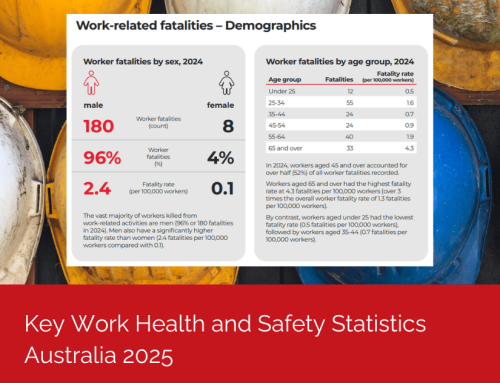A near-miss is an unplanned event that didn’t result in injury, illness, or damage but had the potential to do so. While it may be tempting to view low near-miss reports as a positive sign, the reality may be more complex.
A low reporting rate could indicate a lack of understanding, fear of reprisal, or even apathy toward safety processes. So, why do some employees hesitate to report near misses?
Although many mature organisations have well-developed policies and systems for tracking near misses, investigating their causes, and implementing controls, not all employees fully understand the purpose or importance of near-miss reporting. Without this understanding, employees may see reporting as unnecessary, undermining efforts to prevent future incidents.
The main purpose of near-miss reporting is to provide valuable insights into potential hazards, allowing organisations to assess and enhance their processes to prevent accidents. Near-misses serve as critical indicators, highlighting cultural gaps and weaknesses in safety protocols that could escalate into serious issues if unaddressed.
However, some organisations mistakenly celebrate low numbers of reported near misses without considering what those numbers truly mean. Is the organisation experiencing fewer near misses, or are employees simply not reporting them? Safety experts agree that an effective near-miss or close-call reporting system is essential for identifying and eliminating hazards before they result in injury.
Why don’t people report near-misses?
Understanding why employees fail to report near misses can help organisations strengthen their safety culture. Here are five common reasons for low near-miss reporting:
- Uncertainty about what to report
Employees may be unclear about what constitutes a near-miss or what needs to be reported. Without clear guidance, employees may overlook incidents or be unsure of how to report them. - Fear of management reprisal
Employees may fear negative consequences for reporting a near-miss, such as being labelled a “snitch,” jeopardising their job security, or implicating others. Contractors may fear reputational damage, loss of future contracts, or other professional consequences. - Lack of follow-through on reports
When reporting feels like a “tick and flick” exercise, employees may feel disheartened. If they receive no feedback on what happens after submitting a report, they may conclude that management doesn’t take near-miss reports seriously. - Reporting process is too burdensome
Complicated or time-consuming paperwork can discourage reporting, especially if employees believe their report will lead to more bureaucracy without actual change. - Perception that it’s “just part of the job”
In some industries, near misses may be viewed as “part of the work.” Employees may dismiss these events, believing they are inherent to the job and not worth reporting.
Moving Towards a Culture of Safety
Low near-miss reporting can hinder an organisation’s ability to identify and address potential hazards, leading to missed opportunities for safety improvements. Encouraging near-miss reporting requires:
-
Clear education and training
Clarify what constitutes a near-miss and the importance of reporting all close calls, even if they seem minor. Training should reinforce the connection between reporting and preventing future incidents. -
Building trust and open communication
Create a non-punitive reporting environment. Leaders should demonstrate that reports are valued and will not result in negative consequences for employees. -
Demonstrating action on reports
Employees are more likely to report near misses if they see that leadership follows up on reported issues and takes action. Sharing outcomes and changes resulting from reports builds trust in the system. -
Streamlining the reporting process
Simplifying the reporting process and making it accessible can encourage more employees to participate. Consider digital tools or apps that make reporting quick and easy. -
Challenging perceptions
Address beliefs that certain risks are just “part of the job.” Reinforce that every near-miss report is valuable for enhancing workplace safety.
Rethinking Low Near-Miss Reports
While low near-miss reports may initially appear to indicate a strong safety record, they may reflect underlying issues in the organisation’s safety culture. By understanding and addressing the reasons behind low reporting, organisations can better leverage near-miss reporting to improve safety, reduce incidents, and create a culture that values proactive hazard prevention. Embracing near-miss reporting as a critical safety tool will empower employees, build trust, and make the workplace safer for everyone.






